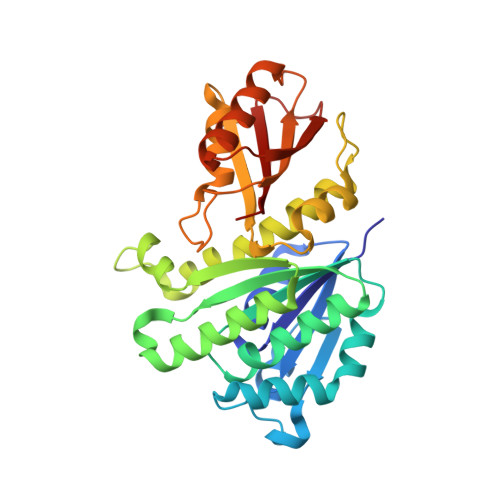Identification of the key interactions in structural transition pathway of FtsZ from Staphylococcus aureus
Fujita, J., Harada, R., Maeda, Y., Saito, Y., Mizohata, E., Inoue, T., Shigeta, Y., Matsumura, H.(2017) J Struct Biol 198: 65-73
- PubMed: 28456664
- DOI: https://doi.org/10.1016/j.jsb.2017.04.008
- Primary Citation of Related Structures:
5H5G, 5H5H, 5H5I - PubMed Abstract:
The tubulin-homolog protein FtsZ is essential for bacterial cell division. FtsZ polymerizes to form protofilaments that assemble into a contractile ring-shaped structure in the presence of GTP. Recent studies showed that FtsZ treadmilling coupled with the GTPase activity drives cell wall synthesis and bacterial cell division. The treadmilling caused by assembly and disassembly of FtsZ links to a conformational change of the monomer from a tense (T) to a relaxed (R) state, but considerable controversy still remains concerning the mechanism. In this study, we report crystal structures of FtsZ from Staphylococcus aureus corresponding to the T and R state conformations in the same crystal, indicating the structural equilibrium of the two state. The two structures identified a key residue Arg29, whose importance was also confirmed by our modified MD simulations. Crystal structures of the R29A mutant showed T and R state-like conformations with slight but important structural changes compared to those of wild-type. Collectively, these data provide new insights for understanding how intramolecular interactions are related to the structural transition of FtsZ.
- Department of Applied Chemistry, Graduate School of Engineering, Osaka University, 2-1 Yamadaoka, Suita, Osaka 565-0871, Japan.
Organizational Affiliation:


















